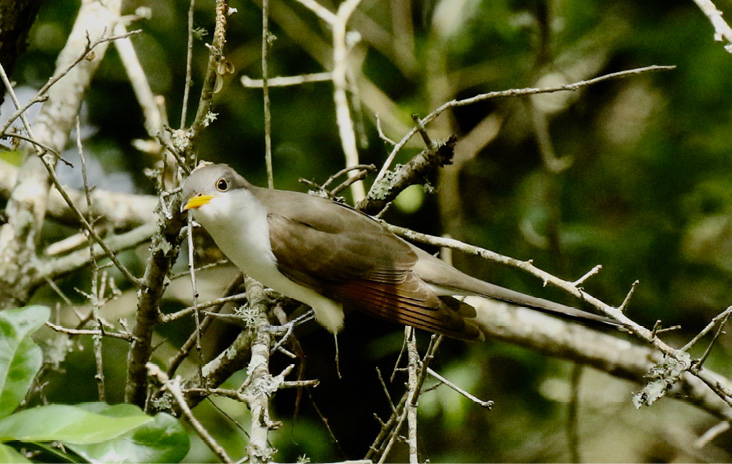John Kricher

At 3:47 pm, the Yellow-billed Cuckoo dropped from the shade of the leafy tree to a lower branch fully exposed to the sun. All photographs by the author.
There are certain words and expressions in common usage that birders have adopted, tweaked, and added to the birding lexicon. For example, many birders do not say “I see the bird,” but rather, “I am on the bird.” To say you see a bird is spot-on accurate—providing that you do—but to say you are on the bird, not so much. That is the value of a colloquialism; it is for the in-crowd. In this example it means you have a binocular view of the bird. Colloquialisms are part of every language including the evolving language of birding. Another word that is seemingly in constant birding usage is the word “show.” Examples abound, often finding their way to eBird reports or other birder media: “The [bird name, singular or plural] put on a great show.” Birds likely do not realize they are performing a show for birders. They are just being birds. That is why we watch and adore them. They not only look and sound interesting but also frequently act interesting. They perform. In birding, as in theater, there is “no business like show business.”
Migration in North America is an immense biannual bird show played out across a continent. One of myriad natural theaters in which to enjoy that show is spring along the Texas Gulf Coast from Galveston eastward. And one of the best places to do that is at Sabine Woods near the town of Port Arthur, which has the largest oil refinery in the United States, a reality impossible to miss as one drives past it.
To view the rest of the article you'll need to
subscribe. Bird Observer publishes original articles on birding locations, on avian populations and natural history, on regional rarities, field notes, field records, photographs, and art work.